Yan Pei-Ming. Oltre il muro - Regina Cœli, Roma

© Yan Pei-Ming, ADAGP, Paris, 2025 | Yan Pei-Ming, Oltre il muro - Regina Cœli, Roma, 2025 (detail). Watercolour on paper, 110x80 cm. each. Courtesy the artist, Holy See Dicastery for Culture and Education, MASSIMODECARLO I Ph. Clérin-Morin
Dal 15 February 2025 al 31 May 2025
Roma
Luogo: Conciliazione 5
Indirizzo: Via della Conciliazione 5
On February 15th, 2025, the Vatican State’s Minister of Culture and Education will open its first space in Rome dedicated entirely to contemporary art. Named after its address, Conciliazione 5 debuts as part of the Artists’ Jubilee, a special initiative introduced by Pope Francis within the broader celebrations of the Holy Jubilee. This year’s theme, Speranza (Hope), draws from Pope Francis’s apostolic letter Spes non confundit, which reflects on hope as a force of renewal.
Chinese-French artist Yan Pei-Ming, one of the most celebrated painters of our time, renowned for his raw, expressive portraits that capture the weight of history and human experience, has been selected to inaugurate the space. Curated by Cristiana Perrella and commissioned by the Vatican, his project Oltre il muro - Regina Cœli, Roma turns its focus to Regina Coeli - a former convent turned prison. For centuries, the walls of Regina Coeli have contained stories of confinement, resilience, and humanity. Overcrowding and a fractured system define its present, yet within this space, life endures - friendships form, routines settle, time stretches quietly, hopes are both lost and found. It is here, in the heart of this complex and often invisible world, that Oltre il muro - Regina Cœli, Roma unfolds.
For Yan Pei-Ming, portraiture has always been an act of witnessing. His work spans from anonymous figures to historical icons alike. Here, however, the faces are not of emperors, revolutionaries, or pop culture legends - they are of Simona, a prison officer who runs on the beach to clear her mind; Gaetano, a father who unwinds with football; Roberto, a cook who prays for a better future; Solomon, a cleaner who arrived in Italy searching for a life beyond war. Each face tells a story beyond the statistics of incarceration, beyond the rigid structure of the justice system.
Moving away from his signature large-scale oil paintings, Yan Pei-Ming embraces the delicate, transparent nature of watercolour - allowing its fluidity and immediacy to reflect the humanity of his subjects. At times, the pigment seeps freely, mirroring the way identity blurs within institutional structures. Other times, the strokes remain precise, capturing the defiant individuality of each sitter. Yan Pei-Ming’s hand is both firm and compassionate, offering neither absolution nor condemnation, but rather a quiet insistence: Look. See.
Beyond Regina Cœli’s walls lies a city that moves forward, often oblivious. Families who wait. A system that struggles to change. And now, thanks to Yan Pei-Ming, a series of faces that demand to be seen - not just as prisoners or guards, but as people, as part of a shared humanity. In capturing them, he has given them something invaluable: a space beyond the confines of Regina Cœli, beyond judgment. A space to exist.
“My work is always oriented towards the human being, man is at the center of everything, the fundamental element of my work. If they asked me to create an abstract painting, I don’t think I could do it: I’m interested in human beings. I am a painter of our time and portraying the secluded society of a jail seems one of the most symbolical acts of unveiling and a great true chance to bring them hope.” Yan Pei-Ming, January 2025
Yan Pei-Ming was born in Shanghai in 1960; he lives and works between Dijon, Paris and Shanghai.
From the beginning of his career Pei-Ming has stood out for his interest in the human figure and portraiture. He gained international recognition for his expressive and monumental portraits of historical figures like Mao Zedong, the Buddha, the Pope, and Bruce Lee, while also exploring personal themes through self-portraits and depictions of his family.
The artist famously uses a long, mop-sized brush to create his iconic images, working rapidly with wet-into-wet oil paint, primarily on a two-toned monochrome colour palette in black and white or red and white.
Yan Pei-Ming's work is prominently featured in both private and public collections, including: National Gallery of Australia, Canberra; Heidi Horten Collection; S.M.A.K. Stedelijk Museum voor Actuele Kunst, Ghent; Guangdong Museum of Art, Guangzhou; Shanghai Art Museum, Shanghai; Yuz Museum, Shanghai; Centre Pompidou, Paris; Collection Lambert en Avignon, Avignon; Fondation François Pinault, Paris; Fondation Louis Vuitton, Paris; Fonds Régional d’Art Contemporain de Bourgogne, Dijon; Institut d’Art Contemporain, Villeurbanne; Le Consortium, Dijon; Les Abattoirs / FRAC Midi-Pyrénées, Toulouse; Musée d’Art Moderne de la Ville de Paris, Paris; Musée des Beaux-Arts, Dijon; Musée des Beaux-Arts, Rennes; Musée Paul Valéry, Sète; Collection Deutsche Bank, Frankfurt; Kunsthalle Mannheim, Mannheim; Museum Ludwig, Cologne; Banca Popolare di Bergamo, Bergamo; Collezione Fondazione San Patrignano, Rimini; GAMeC - Galleria d'Arte Moderna e Contemporanea, Bergamo; MAXXI - Museo Nazionale delle Arti del XXI Secolo, Roma; The National Museum of Modern Art, Tokyo; Qatar Museums Authority, Doha; Sonje Museum of Contemporary Art, Kyongju; Wooyang Museum of Contemporary Art, Gyeongju; Centro de Arte Contemporáneo, Málaga; Voorlinden Museum, Wassenaar; Louvre Abu Dhabi Museum, Abu Dhabi; Academy of Arts, Honolulu; Honolulu Museum of Arts, Honolulu; The Hawai’i State Foundation on Culture and the Arts, Honolulu; TIA Collection, Santa Fe.
Yan Pei-Ming’s work was included in The Lyon Biennale (1997, 2000); Venice Biennale, Venice (1995, 2003); the Sevilla Biennale, Sevilla (2006); the Istanbul Biennial, Istanbul (2007); The Bangkok Biennale (2018), among others.
Chinese-French artist Yan Pei-Ming, one of the most celebrated painters of our time, renowned for his raw, expressive portraits that capture the weight of history and human experience, has been selected to inaugurate the space. Curated by Cristiana Perrella and commissioned by the Vatican, his project Oltre il muro - Regina Cœli, Roma turns its focus to Regina Coeli - a former convent turned prison. For centuries, the walls of Regina Coeli have contained stories of confinement, resilience, and humanity. Overcrowding and a fractured system define its present, yet within this space, life endures - friendships form, routines settle, time stretches quietly, hopes are both lost and found. It is here, in the heart of this complex and often invisible world, that Oltre il muro - Regina Cœli, Roma unfolds.
For Yan Pei-Ming, portraiture has always been an act of witnessing. His work spans from anonymous figures to historical icons alike. Here, however, the faces are not of emperors, revolutionaries, or pop culture legends - they are of Simona, a prison officer who runs on the beach to clear her mind; Gaetano, a father who unwinds with football; Roberto, a cook who prays for a better future; Solomon, a cleaner who arrived in Italy searching for a life beyond war. Each face tells a story beyond the statistics of incarceration, beyond the rigid structure of the justice system.
Moving away from his signature large-scale oil paintings, Yan Pei-Ming embraces the delicate, transparent nature of watercolour - allowing its fluidity and immediacy to reflect the humanity of his subjects. At times, the pigment seeps freely, mirroring the way identity blurs within institutional structures. Other times, the strokes remain precise, capturing the defiant individuality of each sitter. Yan Pei-Ming’s hand is both firm and compassionate, offering neither absolution nor condemnation, but rather a quiet insistence: Look. See.
Beyond Regina Cœli’s walls lies a city that moves forward, often oblivious. Families who wait. A system that struggles to change. And now, thanks to Yan Pei-Ming, a series of faces that demand to be seen - not just as prisoners or guards, but as people, as part of a shared humanity. In capturing them, he has given them something invaluable: a space beyond the confines of Regina Cœli, beyond judgment. A space to exist.
“My work is always oriented towards the human being, man is at the center of everything, the fundamental element of my work. If they asked me to create an abstract painting, I don’t think I could do it: I’m interested in human beings. I am a painter of our time and portraying the secluded society of a jail seems one of the most symbolical acts of unveiling and a great true chance to bring them hope.” Yan Pei-Ming, January 2025
Yan Pei-Ming was born in Shanghai in 1960; he lives and works between Dijon, Paris and Shanghai.
From the beginning of his career Pei-Ming has stood out for his interest in the human figure and portraiture. He gained international recognition for his expressive and monumental portraits of historical figures like Mao Zedong, the Buddha, the Pope, and Bruce Lee, while also exploring personal themes through self-portraits and depictions of his family.
The artist famously uses a long, mop-sized brush to create his iconic images, working rapidly with wet-into-wet oil paint, primarily on a two-toned monochrome colour palette in black and white or red and white.
Yan Pei-Ming's work is prominently featured in both private and public collections, including: National Gallery of Australia, Canberra; Heidi Horten Collection; S.M.A.K. Stedelijk Museum voor Actuele Kunst, Ghent; Guangdong Museum of Art, Guangzhou; Shanghai Art Museum, Shanghai; Yuz Museum, Shanghai; Centre Pompidou, Paris; Collection Lambert en Avignon, Avignon; Fondation François Pinault, Paris; Fondation Louis Vuitton, Paris; Fonds Régional d’Art Contemporain de Bourgogne, Dijon; Institut d’Art Contemporain, Villeurbanne; Le Consortium, Dijon; Les Abattoirs / FRAC Midi-Pyrénées, Toulouse; Musée d’Art Moderne de la Ville de Paris, Paris; Musée des Beaux-Arts, Dijon; Musée des Beaux-Arts, Rennes; Musée Paul Valéry, Sète; Collection Deutsche Bank, Frankfurt; Kunsthalle Mannheim, Mannheim; Museum Ludwig, Cologne; Banca Popolare di Bergamo, Bergamo; Collezione Fondazione San Patrignano, Rimini; GAMeC - Galleria d'Arte Moderna e Contemporanea, Bergamo; MAXXI - Museo Nazionale delle Arti del XXI Secolo, Roma; The National Museum of Modern Art, Tokyo; Qatar Museums Authority, Doha; Sonje Museum of Contemporary Art, Kyongju; Wooyang Museum of Contemporary Art, Gyeongju; Centro de Arte Contemporáneo, Málaga; Voorlinden Museum, Wassenaar; Louvre Abu Dhabi Museum, Abu Dhabi; Academy of Arts, Honolulu; Honolulu Museum of Arts, Honolulu; The Hawai’i State Foundation on Culture and the Arts, Honolulu; TIA Collection, Santa Fe.
Yan Pei-Ming’s work was included in The Lyon Biennale (1997, 2000); Venice Biennale, Venice (1995, 2003); the Sevilla Biennale, Sevilla (2006); the Istanbul Biennial, Istanbul (2007); The Bangkok Biennale (2018), among others.
SCARICA IL COMUNICATO IN PDF
COMMENTI

-
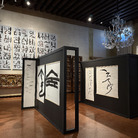 Dal 8 November 2025 al 11 January 2026
Venezia | Museo Correr
Dal 8 November 2025 al 11 January 2026
Venezia | Museo Correr
CARATTERI. Calligrafia e tipografia: Corea del Sud e Stati Uniti
-
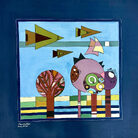 Dal 8 November 2025 al 22 February 2026
Brescia | Museo di Santa Giulia
Dal 8 November 2025 al 22 February 2026
Brescia | Museo di Santa Giulia
Material for an Exhibition. Storie, memorie e lotte dalla Palestina e dal Mediterraneo
-
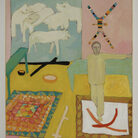 Dal 8 November 2025 al 18 January 2026
Perugia | Perugia, Spoleto e Gubbio
Dal 8 November 2025 al 18 January 2026
Perugia | Perugia, Spoleto e Gubbio
Mimmo Paladino. Antologica
-
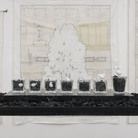 Dal 7 November 2025 al 25 January 2026
Roma | Museo Carlo Bilotti Aranciera di Villa Borghese
Dal 7 November 2025 al 25 January 2026
Roma | Museo Carlo Bilotti Aranciera di Villa Borghese
Silvia Scaringella. Deus sive natura
-
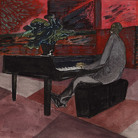 Dal 5 November 2025 al 1 March 2026
Asti | Palazzo Mazzetti
Dal 5 November 2025 al 1 March 2026
Asti | Palazzo Mazzetti
PAOLO CONTE. Original
-
 Dal 28 October 2025 al 15 February 2026
Brescia | Pinacoteca Tosio Martinengo
Dal 28 October 2025 al 15 February 2026
Brescia | Pinacoteca Tosio Martinengo
Peter Paul Rubens. Giovan Carlo Doria a cavallo


